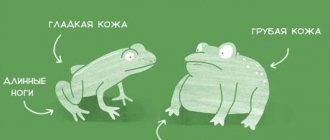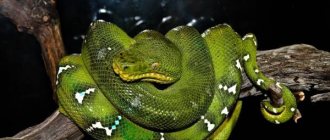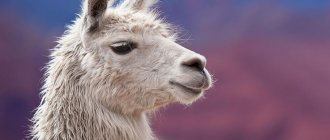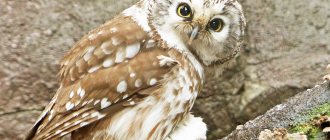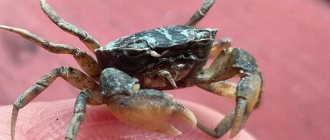Similarities between a toad and a frog
Both species of amphibians belong to the amphibian family. They love water very much. Another common feature is the presence of webbed limbs. Thanks to this, they are considered excellent swimmers.
The basis of the diet for toads and frogs are insects, which they swallow whole. At the same time, amphibians do not chew their food. This indicates the same mechanism of food digestion. Another similarity is the laying of eggs in water. However, the method of reproduction itself is somewhat different.
What is the difference
Toads and frogs have significantly more differences than similarities. The main difference lies in the appearance of the individuals. Toads are characterized by short hind limbs. In addition, they are more impressive in size. The body of these individuals is considered flat and heavy. In this case, the head is located quite low - almost near the ground. Frogs are distinguished by their large heads. Moreover, its size is significantly smaller than that of a toad. In addition, she is always in an elevated position.
The skin of toads is characterized by a warty structure. In addition, these amphibians do not jump. The structure of the skin is also significantly different. In toads it is dry, and in frogs it is slippery.
Skin color also helps to distinguish one individual from another. Frogs are characterized by light coloration on their bellies. At the same time, the shade of the back resembles aquatic plants.
Another important difference is the habitat of the individuals in question. Both types of amphibians love water, but frogs constantly live in bodies of water, and toads can live on land. At the same time, they choose damp places.
Another feature is the laying of eggs. The mechanism of this process differs. In addition, toads lay fewer eggs. Therefore, they have lower reproductive functions.
Expert opinion
Karnaukh Ekaterina Vladimirovna
Graduated from the National University of Shipbuilding, majoring in Enterprise Economics
Toads usually hunt after sunset. Therefore, they are predominantly characterized by a nocturnal lifestyle. At the same time, the peak of frog activity occurs during the daytime.
Black-footed copepod
In English, they are called Wallace's flying frogs, which already says a lot. If they don't fly, they definitely plan. These amphibians have particularly long fingers with wide membranes, which are used as parachutes when jumping. They also have skin flaps on the forelimbs, which are necessary for better surface grip.
Black-footed copepods spend almost their entire lives in trees, descending to the ground only to mate and lay eggs. They use their gliding abilities to evade pursuit by jumping from branch to branch. In one jump, copepods can cover a distance of 15 meters. Although they are not the only amphibians with such abilities, black-footed copepods are definitely one of the largest, reaching up to 10 cm in length.
Paradoxically, the future of these frogs directly depends on the future of Asian rhinoceroses. The fact is that copepods lay their eggs in fetid pits used by rhinoceroses for rest. With Asian rhinoceroses nearly extinct, this could push Wallace's flying frogs to the brink of extinction. TopCafe hopes that in the near future the population of rhinoceroses, like these unusual frogs, will increase.
Comparison of physical development
Depending on the variety, the size of frogs ranges from 1 to 30 cm. A feature of the epithelium is a moist and smooth surface. Almost all aquatic inhabitants have webbed toes. Another feature is the release of light toxic substances from the skin, which makes them inedible for many predators.
The difference between toads is their warty skin, which is characterized by a dry surface. Another feature is the short body and the same legs. A special poisonous secretion is synthesized in the large parotid glands, which are located behind the eyes. This substance is not at all dangerous to people. Toads are distinguished by a larger and squat body. Another feature is considered to be a slight drooping of the head.
hind legs
Frogs are characterized by long and strong limbs. Thanks to this structure of their legs, they can jump. Toads are characterized by short legs, which is why they move primarily at a walk.
Leather
The skin of frogs has a smooth structure. Toads are characterized by thick, tuberous skin, which is covered with singly distributed poisonous glands.
Another difference is the different degree of moisture of the skin. In frogs, they constantly remain moist and slimy to the touch. Toads are characterized by dry skin.
Teeth
Toads have no teeth, while frogs have teeth on the upper jaw.
Eyes
Most often, frogs are distinguished by their eyes, which are clearly visible against the background of the body. This feature is not typical for toads.
Earth toad: description
The earth toad is similar to a frog, which is why many people confuse them. In addition, some nationalities and representatives of different families are designated, in one word, without paying attention to significant differences.
In fact, this is unfair to the real toad, since it belongs to the class of amphibians, representing the order of anurans and the family of toads. This family includes more than 500 species, which are defined in 40 genera. The third part of this family lives in Europe.
Appearance
The appearance of this creature is not attractive: the amphibian’s body is loose, without clear outlines, and its head is flattened. The eyes are very bulging, and membranes are visible between the toes of her paws. The main color of the skin is earthy, while the skin is not smooth and is covered with many bumps and warts. If we take into account the appearance of the toad, it is not at all surprising that this amphibian disgusts humans.
Depending on the species, the size of toads is simply amazing, as they can grow to more than half a meter in length, gaining weight up to 1 kilogram. Toads have relatively short limbs when compared to their relatively bulky bodies. Due to this fact, toads cannot jump like frogs and feel uncomfortable in water.
A distinctive feature of toads is:
- In the absence of teeth in the upper jaw.
- Males have bumps on their limbs called “nuptial calluses.” They allow the male to stay on the body of the female during the fertilization process.
- There are large parotid glands called “parotids”.
Interesting to know! The parotid glands produce a special secretion to moisturize the skin. In some species, such a secretion includes poisonous components that serve to protect the amphibian from natural enemies. This secret is not dangerous for humans and can only cause a burning sensation. Only one toad on our Planet is dangerous to humans - the aga toad.
WHAT is the difference between a FROG and a TOAD, you definitely didn’t know this about a toad
Types of earth toads with photos
On our territory, as well as in the territories of the former CIS, only 6 varieties out of 40 existing ones are found.
Gray ground toad
The gray ground toad (common toad) is considered the most common species, and quite large, measuring 7x12 centimeters. Despite its name, its color can be not only gray, but also olive or brown. The back area is darker compared to the belly area. As a rule, the gray toad is wider than long. On our territory, this amphibian is found in the Far East and Central Asia. The toad prefers to settle in forest-steppe areas, avoiding high humidity.
Far Eastern toad (Bufo gargarizans)
The Far Eastern toad, on the contrary, prefers to settle in flooded meadows, as well as in river floodplains, giving preference to high soil moisture. This species is distinguished by the fact that the back of these amphibians is decorated with bright black-brown spots on a gray background. This species is also distinguished by the fact that its females are larger than its males. As a rule, this species is found in the Far East, Sakhalin, Transbaikalia, Korea and China.
Green toad
The green toad is so called because its back is decorated with dark green spots against an overall olive-colored background. This coloring allows the amphibian to perfectly camouflage itself in its natural habitat, which is associated with meadows and floodplains. This species secretes a poisonous secretion that is dangerous to natural enemies and harmless to humans. The green earth toad is found in the vast Volga region, in Asian countries, in Europe and in northern Africa.
Caucasian toad (Bufo verrucosissimus)
The Caucasian toad grows more than 12 cm in length, therefore it is a competitor to the common toad. Adults are brown or dark gray in color, but young toads are orange in color, which becomes darker as they mature. The habitat of this species is associated with the territory of the Caucasus. It is found almost everywhere: in forests, in mountainous areas, in caves with high humidity.
Reed toad (Epidalea calamita)
The reed toad (stinker) is similar to the green toad. It grows up to 8 cm in length and prefers to live in reed thickets of marshy places. The males of these toads have a well-developed throat resonator, which the male uses during mating season. This species lives in Belarus, western Ukraine and the Kaliningrad region.
Mongolian toad (Pseudepidalea raddei)
The Mongolian toad reaches 9 cm in length, and its body is covered with many warts and spines. The base color can vary from gray to beige and even brown. Against the general background there is a pattern consisting of various geometric shapes. They mainly live in the vast expanses of Mongolia, while this species has been spotted in Siberia, the Far East, western Ukraine and the Baltic states.
Interesting fact! Bloomberg's toad is considered the largest toad living on our Planet, with a body length of about 25 centimeters. This is a completely harmless creature. The species is on the verge of extinction, although single individuals are still found in the tropics of Colombia and Ecuador.
The Kihansi splashing toad is considered the smallest toad in the world as it measures between 2 and 3 cm depending on its gender. Unfortunately, it suffered the same fate as the world's largest toad: it was on the verge of extinction. Previously, the smallest toad was found in Tanzania, on the Kihansi River, or rather within one waterfall.
Character and lifestyle
The main activity of the earth toad is associated with the dark time of day, and during the daytime this amphibian rests. After sunset, ground toads go in search of food. They move slowly, as they say, “walk,” but do not jump, like frogs. The toad is capable of making several jumps if it senses a threat to its life. In case of danger, the toad arches its back with a hump, depicting something terrible that can frighten natural enemies. Frogs defend themselves in a completely different way.
Toads are clumsy and slow creatures of nature, but at the same time they are excellent hunters: they “shoot” their tongue with lightning speed, grabbing insects literally on the fly. Frogs do not have such abilities. When winter cold comes, toads hibernate, and in advance they find secluded places for themselves under the roots of trees, in abandoned holes, under fallen leaves, etc. Toads prefer to lead a solitary lifestyle. They gather in groups only to prolong their lineage.
How long does a ground toad live?
The ground toad can live more than 3 decades, and there is information that some individuals lived for 4 decades.
Habitat
For their livelihoods, toads choose places with high humidity, and they need a lot of water in order to spawn.
Important point! Since there are many species of ground toads in nature, these amphibians are found almost everywhere. They inhabit almost all continents, with the exception of Antarctica.
Toads are found in damp cellars, in dug up damp earth, in mountain crevices, in floodplains of rivers overgrown with short grass, and in damp forests. To be fair, it should be noted that there are species that feel very comfortable in steppe zones, as well as in arid climatic conditions.
Ground toad.
What does it eat?
The basis of the diet of ground toads consists of all kinds of insects, although the toad can feast on snails, worms, caterpillars, centipedes, etc., as well as insect larvae and spiders. The ground toad has an excellent appetite, so it is particularly indiscriminate and does not pay attention to the bright, frightening colors of various insects, as well as their unique appearance. Ground toads are considered very effective human assistants in the fight against various pests of cultivated plants.
Ground toads can safely be called night guards of the harvest. In one day, each earthen toad can destroy up to 8 grams of pests. Larger species, if lucky, can snack on a lizard, small snake, small rodent, etc. Toads actively react to any movements, but do not react to vibrations in vegetation.
Natural enemies
The earth toad has more than enough natural enemies, in the form of birds of prey and predatory animals, including reptiles. Not all species are capable of secreting a poisonous secretion to protect themselves. Therefore, they have to rely on their camouflage color, and, in order not to be on the verge of extinction, on their high fertility.
Reproduction and offspring
With the arrival of spring, and in the tropics with the onset of the rainy season, toads begin their breeding season. During this period, toads gather in numerous groups near water bodies, since toads lay eggs in water bodies, where offspring are guaranteed to be born. From the eggs, small larvae hatch and turn into tadpoles. The tadpoles will spend about two months in the water before they develop into small but full-fledged toads. After this, they will leave the reservoirs and return to them next spring to continue their race. Toad eggs are different from frog eggs.
Frogs lay eggs in gelatinous lumps, and toads form long cords from the eggs, sometimes up to 8 meters long. One clutch consists of 2 such cords, in which there are up to 7 thousand eggs. To keep the clutch securely, the toads seem to braid these cords, connecting them with algae. Depending on the species, the larvae are born after 5 days or 2 months. Males are the first to arrive at reservoirs and stage their concerts, luring females with their voices. The male climbs onto the female's back and begins to fertilize the eggs that the female lays. Having completed the spawning process, the females return to land.
Interesting to know! There are species of ground toads in which the males act as nannies. They sit in one place in the ground and guard bundles of eggs wound around their paws until larvae emerge from the eggs.
There are also midwife toads that carry eggs laid by the female on their backs. As a rule, males perform this role. There is also a viviparous toad that lives in Africa. This type of toad carries eggs within itself for 9 months, and full-fledged toads are born, bypassing the stage of larvae and tadpoles. The most amazing thing is that during her life the female bears her offspring only twice and each time no more than 25 babies. Therefore, it is not at all surprising that this species is on the verge of extinction.
Difference in movement
It is also possible to distinguish one individual from another by its method of movement. So, frogs move by jumping. Due to the short length of their limbs, toads are not capable of jumping. That's why they waddle awkwardly on the ground.
What is unique about the structure of pipa?
When looking at a photo of a Surinamese pipa, it seems that the individual was hit by a steamroller. A flattened body, shaped like an old tree leaf, a flat stone or a dried cake, and a triangular, depressed head. The pipa has no teeth or tongue; on its head there is only a wide mouth and eyes without eyelids.
The toad's front paws end in 4 long fingers without claws or membranes; they are necessary for digging mud and burrows. The hind legs have powerful skin folds (therefore the individual swims well).
Difference between habitat and nutrition
Frogs mainly live in water. Moreover, all toads are adapted to living both in water and on land. In most cases, frogs can be found near the banks of swamps and ponds. This is due to the fact that such amphibians spend most of their lives in water.
Toads are often found in gardens and vegetable gardens. These amphibians are born in water, after which they move to land. They return to the water exclusively to lay eggs.
Expert opinion
Karnaukh Ekaterina Vladimirovna
Graduated from the National University of Shipbuilding, majoring in Enterprise Economics
All amphibians feed on insects. They eat slugs, caterpillars, and larvae. Also in the diet of amphibians are mosquitoes, click beetles, grasshoppers and other pests that live in gardens, orchards and coastal areas.
Reproduction methods
Both species of amphibians require bodies of water to procreate. In water they lay eggs. This occurs in the form of long cords that lie on the bottom or on the stems of aquatic vegetation. Tadpoles that are born form groups and try to stay close to the bottom of the reservoir. In a year, the toad lays 10 thousand eggs.
Males of some varieties of these amphibians participate in the process of oviposition. They can sit in holes in the ground with their eggs wrapped around their legs, waiting for the tadpoles to appear. Subsequently, the males move the eggs into the pond.
Expert opinion
Karnaukh Ekaterina Vladimirovna
Graduated from the National University of Shipbuilding, majoring in Enterprise Economics
Frog eggs look like slimy clumps. They are small in size and located on the surface of the reservoir. Tadpoles also live in water. Only adult individuals are able to go onto land. During the breeding season, frogs usually lay many eggs. However, the specific amount depends on the variety. For example, the bovine variety is capable of laying up to 20 thousand eggs during the season.
Terrible leaf climber
The name of this species of amphibians fully justifies itself. This frog is one of the most poisonous creatures on the planet. One 5 cm long individual contains enough poison to kill 10 to 20 people or 2 elephants. Just one gram of the toxic substance produced by the terrible leaf climber can kill about 15 thousand people. By the way, an article about the most poisonous frogs in the world was published on our website topcafe.su.
Scientists still cannot understand how such tiny creatures can produce such a strong poison. It is assumed that the whole thing is due to poisonous plants, consumed by beetles, termites and ants, which later become prey for leaf climbers. Captive-bred frogs cannot produce toxic substances that are only available to the wild. The alkaloid toxins that coat the skin of the terrible leaf climbers remain effective for a long time, even if the frog is removed from its usual food sources.
As for the victims of this type of frog, they kill everyone who dares to attack them, except for the snakes Liophis epinephelus, which are resistant, but not immune, to the toxins of the terrible leaf climber. This species lives in the Colombian rainforests, near the Pacific Ocean. The high population density of Phyllobates terribilis (scientific name) is due to its small habitat, however, the destruction of forests in the area has led to the threat of extinction of this unique animal.
Wintering of frogs and toads
The wintering habits of amphibians vary. They differ significantly depending on their variety:
- Sharp-faced frogs and spadefoot frogs spend the winter on land. They hide in various recesses sprinkled with leaves. Also, these individuals are often insulated with pine needles.
- Gray and green types of toads use loose soil for wintering. They prefer to settle for the winter in rodent burrows and cracks in the soil structure.
- Grass frogs overwinter at the bottom of the reservoir. They can also do this in thickets of aquatic plants near the shores.
Benefit
Amphibians feed on harmful insects and plant parasites. Thus, they bring great benefits to gardens, vegetable gardens, forests, fields and meadows. To maintain optimal numbers of amphibians in your area, it is recommended to reduce the use of chemicals. Also for this purpose it is worth making a small artificial pond, filling it with aquatic plants.
comparison table
The main features and differences of the amphibians under consideration are summarized in the table:
| Criterion | Frog | Toad |
| Hind limbs | It has long and strong limbs that make it possible to jump. | It has short limbs designed for walking. |
| Eggs | Lays eggs in groups. Young individuals live in water. | Lays eggs in long chains. There are varieties that do not lay eggs, but give birth to live young. Young individuals live in bodies of water. |
| Leather | It has a moist and smooth structure. | Characterized by a dry and lumpy texture. |
| Habitat | Mainly stays in water. | They live on land. |
| Teeth | They are distinguished by the presence of bipod teeth located on top. | They have no teeth. |
| Eyes | They are convex. | They don't stick out. There is a poison gland behind the eyes. |
| Food | Snails, insects, worms, spiders and even fish. | Insects, larvae, slugs, worms and other invertebrates. |
Population and species status
All species of toads that are on the verge of extinction are listed in the Red Book. These include viviparous toads of the African continent, reed toads, and miniature Kihansi toads. It is a pity that man has contributed his hands to this huge problem, mindlessly interfering with living nature, upsetting its balance, which is fraught with unpredictable consequences. By building a dam on the river where Kihansi lived, people deprived this amphibian of its usual habitat. As a result, this unique creation of nature can now only be seen in a zoo.
Ground toad.
